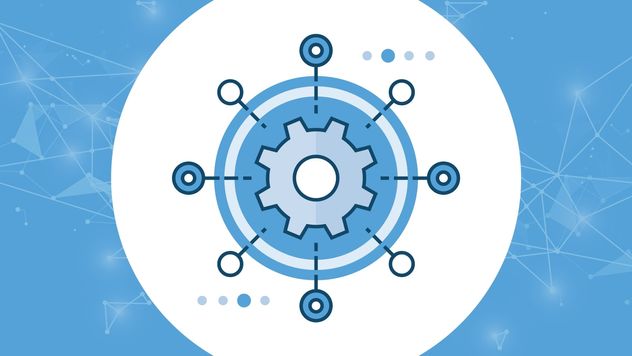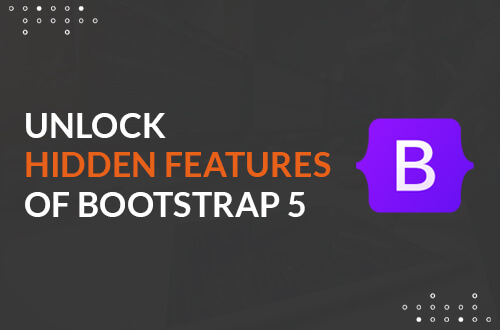
Jump To Section
What do small businesses with small teams need during their product’s life cycle?
Scaling their teams and operations is undoubtedly one of the biggest aims for startups. But scaling using the legacy Agile Scrum frameworks that these small-sized teams are so used to can make scaling digital transformation an uphill battle.
When it comes to a small business scaling up, the Scaling Agile Scrum framework will fail as the business endeavors to add more resources to the team. The Agile Scrum framework is designed for small teams, and a lot of startups end up making the mistake of adding more resources while using the same Scrum framework, resulting in agility loss.
What, then, can startups do to bring about agile and digital transformation without slowing down their operations? What digital transformation frameworks should they consider? What framework for scaling a business will work best for them? When should they consider scaling scrum frameworks, and how can they become more agile at scale with frameworks? Keep reading to find the answers to all these, and more!
How Do You Transition From Company to Agile?
What do all agile frameworks have in common?
They aim to maintain team agility even as the team increases in size by offering a way to make your team more agile at scale with a framework.
Often at the growth stage, one of the biggest problems teams run into is organizing and structuring their processes. This leads to a number of problems that end up significantly slowing a team down.
As they consider business agility transformation, it is crucial for product owners and managers to try out different agile frameworks meant for larger teams so they can ensure the same agility when they are scaling.
Scaled Agile frameworks aim to solve these structuring and organization problems by introducing processes meant for multiple small teams working towards a common goal. This helps teams manage their backlog and also stay agile enough to adapt to changing customer needs.
At times, however, in hopes to adopt agile transformation, teams slow themselves down by jumping on one scaled agile framework without knowing what works for their team and what doesn’t. This leads to a lot of frustration that, in my opinion, can easily be avoided.
Don’t seek out how many agile frameworks are there, but rather which one will best work with your team.
If you’re a small business scaling up that is used to the legacy Scrum framework then what exactly are the best options out there for scaling agile and digital transformation?
The answer to this question largely depends on what works best for your team, but it helps to look at the best, most popular, and well-reviewed Scaled Agile frameworks.
In this article, let’s explore our top three popular frameworks and what teams should focus on while scaling Agile transformation.
3 Popular Scaled Agile Frameworks For Digital Transformation
SAFe Framework
The Scaled Agile Framework® (SAFe®) is a framework for implementing AGILE operations at an enterprise level.
SAFe lays out a set of organizational and workflow patterns that are needed to implement agile practices at an enterprise scale. The SAFe framework offers structured guidelines on how to plan and manage work, the roles and responsibilities of everyone involved, and the values that must be upheld.
The framework is based on creating structure, roles, and processes around multiple scrum teams working together. These teams are called Agile Release Trains (ART) and come with extra roles and responsibilities that need to be filled. The teams coordinate on delegating epics, features, and user stories among themselves and complete work in time-boxed sprints along with all required sprint ceremonies. These sprint ceremonies are quite the same as the legacy scrum framework e.g. Sprint Planning, Retrospective, Backlog Grooming, etc. Teams are also free to use either Kanban or Scrum to finish work in their sprints and every team maintains its own backlog of work.
SAFe is also the most widely used framework for big corporations’ developing and shipping software.
If you are looking to scale your organizational processes and structure, SAFe really is the best option. It doesn’t only focus on building multiple teams working on a single product, but rather on building the key organizational principles, values, and roles that help companies scale and build lean product portfolios. Read this article to learn how to implement SAFe as a Scalable Agile Framework.
LeSS Agile Framework
Another popular framework is LeSS, also known as Large Scale Scrum, which follows the “do more with less” philosophy.
The LeSS framework focuses on scaling existing scrum procedures, always starting with one small scrum team and then scaling to multiple teams working on the same product backlog.
Less is considered much more lightweight than SAFe because it comes with fewer roles, which makes it a much easier process to adopt as an agile transformation framework than SAFe.
The LeSS framework focuses on legacy scrum practices but applies it to multiple teams working on the same product.
Unlike SAFe, in LeSS there is a singular product backlog rather than a team backlog and just one Product Owner. All teams plan and pick their items in Sprint Planning 1 where work is presented to the dev teams. This is followed by Sprint Planning 2, where dev teams discuss development strategies for features and integration of their development into a single product during release time.
Contrary to SAFe, in the LeSS Agile framework, inter-team coordination is also a responsibility of the teams rather than a role dedicated solely to it. This framework is often referred to as barely sufficient by some while it works great for some teams.
LeSS really is a great choice when it comes to affordability due to its lower implementation cost. For some teams, a single Product Owner really proves to be an efficient link between business and tech because they understand the framework, challenges, and product vision and strategy.
Scrum of Scrums
Scrum of Scrums is a framework that focuses on divide and conquer.
It helps organizations take a large workforce and create teams of four to five people working towards a common goal. The framework believes in smaller teams as it helps to build practical and personal relationships, which in turn results in velocity.
Scrum of Scrums also has separate product owners for each team and the ceremonies are exactly the same as Scrum. The framework also comes with extra roles to ensure coordination between different teams. These roles are Chief Product Owner and Scrum of Scrum Master, who solely works on coordination in daily 15 minutes scrum meetings.
The Scrum of Scrums framework is quite lean but does not undermine the importance of coordination roles.
The framework is also quite flexible, allowing you to quickly discuss and switch up processes for greater efficiency. The coordination roles constantly discuss impediments daily and try to resolve and change processes, which allows for open discussion on problems and their solutions, unlike in other frameworks.
Which Agile Scaling Frameworks Are Right For My Team?
There really is no one size fits all solution here: what works for one company will not work for other companies, simply because of different cultures and mindsets.
Usually, a lot of research, trial, and testing is required to create and pick the processes that work for you. Sticking with one framework religiously will slow you down. These frameworks focus on delivery and outcomes, which is great for larger enterprises and teams and helps establish predictable outcomes and clear goals.
However, for small businesses scaling up, the recipe for success is delivering value to customers as fast as possible.
Most popular frameworks also come with their own set of frustrations and problems, which people openly talk about.
For example, we talked about the SAFe framework and how it works but one of the biggest problems that people report with the framework is the unnecessary roles and complex processes. People who have worked in this framework often report that it is a waterfall method in disguise and the delivery of actual work and value to customers is quite low. The jargon and processes are so complex that teams spend more time organizing themselves rather than actually working, let alone being able to work with agility.
On the contrary, the LeSS framework is regarded as barely sufficient as it is a simple and lean framework and relies on fewer roles. If the team dev leads are not used to communicating and coordinating, then the absence of a team’s product owner can be very difficult on everyone.
LeSS is also quite notorious for not solving developer problems as it often is not the focus of the single product owner; sometimes product owners are just swamped with a lot of challenges that demand their attention, and the developer challenges are neglected.
Scrum of Scrums focuses on building smaller teams but it often leads to an imbalance of resources. Finding the perfect performing squads can also be quite a hit-and-miss.
This just proves that no digital transformation framework alone is perfect and in order to achieve efficiency, teams need to invest time into discussion and trial.
What are the Steps to Scale a Small Business?
For all the challenges that come with the aforementioned Scaled Agile Frameworks, what exactly should then growing startups focus on instead of jumping to adopt a Scaled Agile framework?
I really believe that before scaling agile, product teams really need to look at themselves and ask whether they are agile enough to scale.
Scaling Agile with what is right for your squad
Working on your single scrum team is very important as the first team really is a brand ambassador of your values and culture.
Agility is a mindset and your team is like a car engine. Every person is a crucial component of this engine and to perform well, the team needs to have the right mindset. After that, the team will scale efficiently no matter what.
It is also quite important to develop practices that help to build the foundational work ethic for your squad.
For example, how efficient are devs in communicating on tickets? Does your team document a lot of stuff? What onboarding processes do you have for new team members? These processes are important baselines for establishing success in adopting frameworks.
Every team has its own pace and comfort in which they perform best, so it is important for teams to continuously discuss and monitor their performance to make adjustments. Continuous discussion around process improvement is key and all stakeholders should be able to voice their opinions.
If you’re still not sure if you’re ready for Agile transformation with Scaled Agile Frameworks, an agile transformation checklist can help get you started and keep you on track. Use this Agile Culture Checklist to keep your team grounded and efficient as you scale up.
Agile Culture Checklist
1. Customer/User obsession
We’re all here for our users and customers, developing products for them.
Successful companies are always obsessed with making their customer/user experience the best there can be.
Customer obsession is a valuable principle that is quite common in all frameworks and it helps squads develop better features, which in turn helps the product grow.
2. Looking out for each other
A great agile squad is like a well-oiled engine and in order to keep this engine running smoothly, one thing teams need to do is always look out for each other.
Building personal relationships within your squad will help keep your velocity always high.
A great example of this is sick or parental leaves. Whenever a squad member has to take time off work, unprepared teams will struggle.
However, a team with the right Scaling agile mindset will share the work and responsibility of the team member not present. This helps the team to always move forward and take charge when they need to.
3. Always flexible
Flexibility is one of the core principles agile teams need to practice.
Today’s markets have gotten increasingly competitive and startups always need to be delivering value fast, as changing market scenarios can make or break businesses.
Teams who are flexible constantly innovate and stay ahead of the curve by adapting to any situation they are faced with.
I believe teams that fully practice these principles should consider adopting frameworks while always staying true to these principles.
All said and done, let’s see how mixing and matching processes from different frameworks can really be the best way to scale for companies.
Takeaway: Mix, Match, and Perfect!
There is no hard and fast rule to adopt a single framework and stick to it. Studying the different processes and roles within different agile and digital frameworks can give you the best insights into what can work for you.
If you’re a small business looking to scale, you can start with small teams like in Scrum of Scrums as then the teams can focus on building better personal and practical relationships. Having product owners for every squad might not be feasible for you, so try splitting the responsibilities to two or three central product owners.
There are several principles that are common within these frameworks, and hence mixing and matching processes works as many things are interchangeable.
Teams can also experiment to empower their developers so they can also be better at managing work, allowing for less reliance on coordination roles as your tech leads will then be comfortable communicating with stakeholders.
All these experiments and trials can happen within the sprint cycle and you can even monitor two squads simultaneously with different processes to see what is working better for you. You can also add or remove meetings you think the squads need. Creating a feedback channel for all processes and meetings will help validate your experiments.
Finally, it really does not matter if you adopt a popular framework because, with the knowledge and resources available, teams can literally invent their own new frameworks.
Using this approach of mixing and matching while staying true to your agile values is the foundation of success when scaling your operations, structures and processes. Agility is a mindset and that is what you should be preaching across your business. To learn more about how an Agile culture can be adopted across the organization, you’ll find a lot of value in this article that discusses the role of People in Agile.



